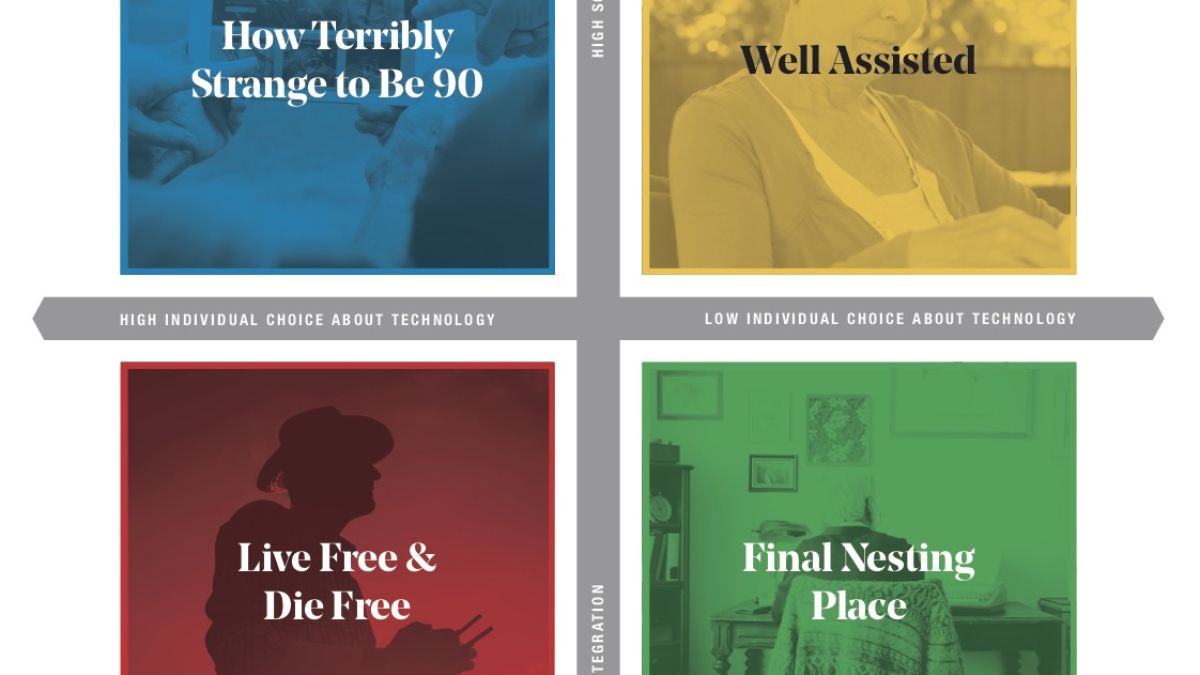Examining our relationship with technology as we age

A new report from ASU School for the Future of Innovation in Society Assistant Professor Lauren Withycombe Keeler and Assistant Research Professor Michael Bernstein looks at the future of aging.
The U.S. population is getting older, and advancements in technology are helping people live longer and fuller lives. But as we continue to age, could those technologies do more harm than good?
A new report from Arizona State University School for the Future of Innovation in Society Assistant Professor Lauren Withycombe Keeler and Assistant Research Professor Michael Bernstein, with scenario narratives from ASU student Andrew Dana Hudson, looks at the future of aging in smart environments, the different scenarios we could see in 30 years and what we can learn from them now.
“The Future of Ageing in Smart Environments: Scenarios of 2050” is the outcome of a January 2020 workshop at ASU, funded by the Kaiteki Institute of the Mitsubishi Chemical Holdings Company. Diverse experts in several fields, including engineering, business, medicine, gerontology and science and technology studies, came together to look at the driving forces that are going to shape the future, and how aging people and smart environments might interact and exist in 2050.
The report features four possible scenarios, each with a description and narrative, and compares those scenarios with insights on future challenges facing society and opportunities for technological innovation.
ASU Now spoke with Withycombe Keeler about this new report and what it could mean for the future.
Question: Why do you think it's important to look at the future of aging in smart environments?
Answer: It's important to think about because it's not necessarily inevitable that the smart technologies that are currently under development will serve aging populations. Understanding the relationship between technologies, societal arrangements and regulations can help researchers and companies develop technologies that better serve aging populations. The scenarios help companies consider how they design their technologies with different regulatory environments and social systems in mind.
Q: How can these scenarios provide insights into challenges we may face as a society in the future?
A: We look across the scenarios for patterns and themes. I think in all of the scenarios we see an economic disparity, and how economic circumstances change the experience of aging. The experience is also affected by the control you have over the technology in your life. Loneliness, and the role of digital environments in addressing loneliness, are also a challenge and an opportunity of these futures. So one of the things that we're thinking about is where do we need more innovation?
Q: Is there one scenario that stands out to you?
A: I love “Live Free and Die Free,” which is a highly individual choice about technology with low social integration. There's a lot of distrust and blaming that happens across generations for the state of the world. The “OK, Boomer” trend continues and gets worse. So those who can afford it move into their own communities with access to medicine and technology to improve their quality of life. If you have money, you can separate yourself from a society that maligns you. But what if you can't? What emerges is a new camper generation, people who strap solar panels to their autonomous vehicles and just roam the country living on campsites and finding places where they can charge up. It's sort of a Wild West.
Q: What do you hope people will learn from this report?
A: Companies have a responsibility to actively engage in dialogues about the kinds of regulations that need to be in place to yield optimal benefits from these technologies. Responsible companies need to consider that if they create technologies in the absence of regulatory environments and disseminate them to the marketplace, that they might be held responsible for the social ills that emerge as a result.
As for individuals, think about what you want to preserve in the future. How can I prepare to have the things that I want and the things that are really important to me in these different futures?
More Science and technology
2 ASU faculty elected as fellows to National Academy of Inventors
Arizona State University faculty members Bertram Jacobs and Klaus Lackner have been elected as fellows to the National…

Harvesting satellite insights for Maui County farmers
Food sovereignty can refer to having access to culturally significant foods, but Noa Kekuewa Lincoln believes it goes farther…

Google grant creates AI research paths for underserved students
Top tech companies like Google say they are eager to encourage women and members of historically underrepresented groups to…